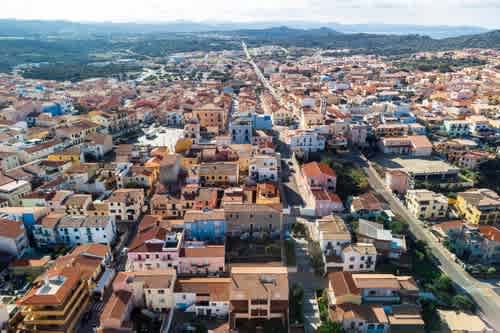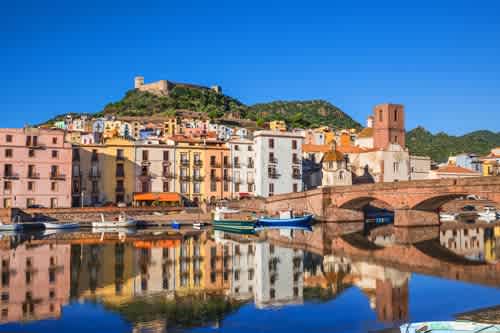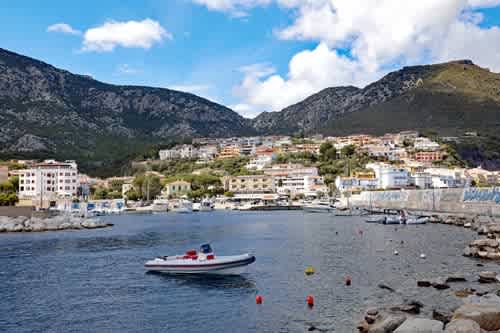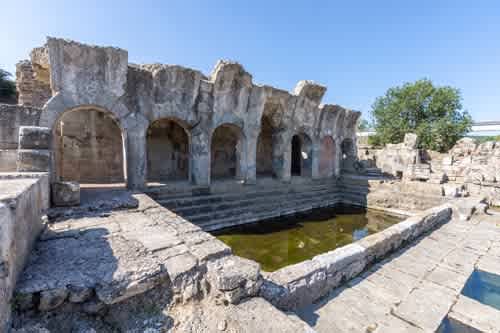Sardinia, an Italian island in the Mediterranean Sea, is a pampering vacation spot with its magical beaches, breathtaking nature, and rich history.
About Sardinia
When the longevity researchers arrived in Sardinia (in Italian: Sardegna) they knew they had reached a high point in their research. Indeed, people do live longer in Sardinia…
The Aga Khan, the Muslim prince from the east, heard about Sardinia and bought one of the beautiful stretches of coast that was almost abandoned. Despite there being no running water, electricity, or local development, he decided that he’d invest his fortune here in quality of life along with longevity. And so, Sardinia became one of the most sought after and expensive places in Europe. It is a favorite vacation spot of the rich and famous from around the world who come here for a relaxing, chilled vacation- or, as the Italians say, pancia all'area vacanza. But, it turns out that the island has a lot more to offer than just a pampering summer vacation.
Sardinia is an island located in the Mediterranean Sea, west of the Italian mainland and north of Africa, on an area of 24 square kilometers. It is one of Italy’s 20 regions. Cagliari, the capital city located in the southern part of the island, is an ancient city that has undergone quite a few conquests throughout its history. The foreign rulers left their cultural and architectural imprint on the island, including on the local dialect, which was more influenced by the Castilian Spanish language than by Italian. The city is surrounded by salt marshes which thousands of flamingos have made their permanent home, and, from a distance, they create the appearance of a whitish-pink foam on the quiet waters of the marshes.
The Costa Smeralda, located in the northwestern part of the island, is a magical stretch of beach which serves as the summer home of the European jet-set. The seaside resort town of Porto Cervo is particularly popular, and, during summer evenings, it resembles the glittering Riviera.
All along the coast, there are resorts, boutique hotels, small marinas for large yachts, designer shops, and restaurants boasting Michelin star chefs. Even if you are not on the glittering elite list, you can definitely spend a few days in the area and rub shoulders with the VIP tourists.
At the northernmost point of Sardinia is the town of Santa Teresa Gallura. In addition to being a picturesque resort town, the town's port is used for ships coming and going between Sardinia and the French island of Corsica, which is located to the north, for the 50 minute boat ride. In the northwestern part of the island is the coastal city of Allegro which is definitely worth at least a day’s visit. The local dialect, architectural style, and delicious local cuisine here are intertwined with influences from the Spanish region of Catalonia.
Sardinia’s stones are laden with history and mystery. Thousands of mysterious round stone buildings are scattered throughout the island, and, despite being built in prehistoric times, they remain intact. These buildings, unique to the island and to a special culture, are called Nuraghe and were developed in the region by a people who lived here thousands of years ago. The purpose and uses of the buildings have not yet been definitively clarified, but experts speculate that they were used for protection and worship.
A visit to Su Nuraxi di Barumini, declared a World Heritage site, will help you understand more about the ancient Nuragic culture. The Noragic tribes, who lived mainly in the center of the island, believed in the water gods since the source of water was, of course, the source of life. Therefore, wherever a spring was discovered, they dug a well temple close by, and a settlement was established at its foot. Most representative of this archeological style is the well-preserved Santa Cristina well temple, and a visit to the site is highly recommended.
In the 6th century BC, Phoenician seafarers arrived on the island and conquered it. While they wiped out Nuragic culture, they did leave the mysterious buildings intact. Following the Phoenicians, the Greeks, the Romans, the Arabs, the Byzantines, the Spaniards from the Kingdom of Aragon, and the Italians from the House of Savoy came to the island. Each left its imprint on different aspects of Sardinian culture: architecture, local cuisine, and differences in language and dialects.
A visit to Barbagia, a wild and mountainous nature park which covers most of the central part of the island, is one of the highlights of a visit to Sardinia and is a great way to get to know the inhabitants and their culture. Spend the day there, getting around by a jeep driven by guides who look like they had a starring role in a Hollywood action movie.
The trip is divided into three parts:
first, a bouncy ride through shepherd paths, then a short trek leading you via an indistinct path to a beautiful lookout point or a hidden water source, and, lastly, a picnic with one of the local shepherds whose culinary abilities compete with their professional shepherding skills. The meal includes homemade cheeses, grilled meats, and, for dessert, a wonderfully simple dish of homemade ricotta cheese with honey, made by local bees, on the side. These delicacies are placed on a piece of classic Sardinian bread called Pane Carasau, a flatbread that looks like a huge pita which was baked until it became crispy like a cracker. All that’s needed to bring out its flavor is a few drops of fine local olive oil and salt from the south of the island.
In the southwestern part of Sardinia, just off the coast, you’ll find two small islands. The island of Sant'Antioco is connected to Sardinia by a road built by the Romans during the time of the Emperor Hadrian. There is a museum on the island that is, in fact, the Phoenician cemetery for young children who were sacrificed to the goddess Ashtoreth and whose ashes were buried in a clay urn. The small pots that are scattered over the entire area are a chilling testimony to the customs of the ancient culture.
The second island is San Pietro, a tiny, hidden island with secluded coves and beaches with golden sand. The town of Carloforte, with its whitewashed houses in white and pastel colors, is known for the delicious pasta which carries its name: Carlofortina- short pasta with pesto, cherry tomatoes, and tuna. Yum!
Another interesting attraction is a tour of one of the mining sites, Monteponi, which was active until a few decades ago. An elevator and trolley will take you down into the bowels of the earth where you’ll hear from a local guide the sad, true story of the local mining community and their way of life. During the quarrying of the Monteponi mine tunnel, one of the most beautiful and spectacular stalactite caves in Europe was discovered: the Santa Barbara Cave. You’ll be taking endless photos of this amazing site!
After an enjoyable day of sightseeing, you’ll welcome a moment of rest and relaxation. Enjoy a bottle of the local red Cannonau wine or white Vermentino wine combined with a wedge of Pecorino Sardo cheese. You may also want to read the award-winning novel Stone Disease by the local writer Milena Agus, who through telling a family saga, exhibits much love for the ordinary people and this special island.
Sardinia: a recipe for longevity…













